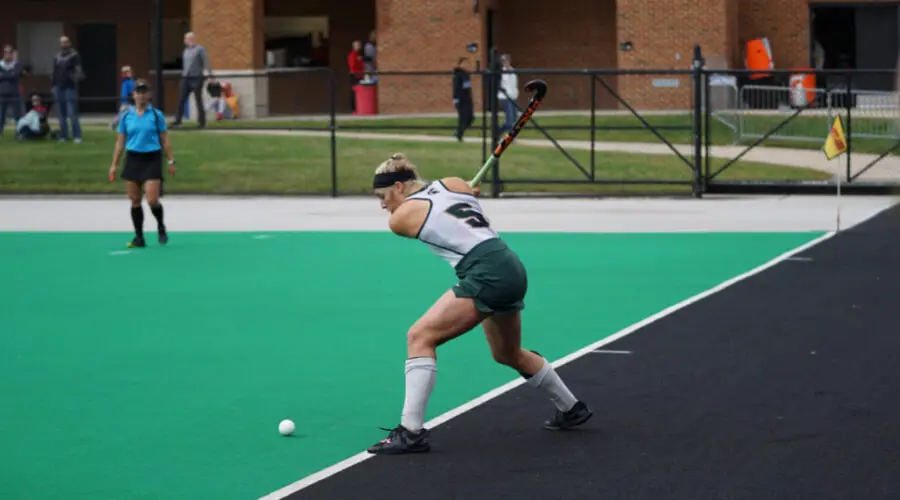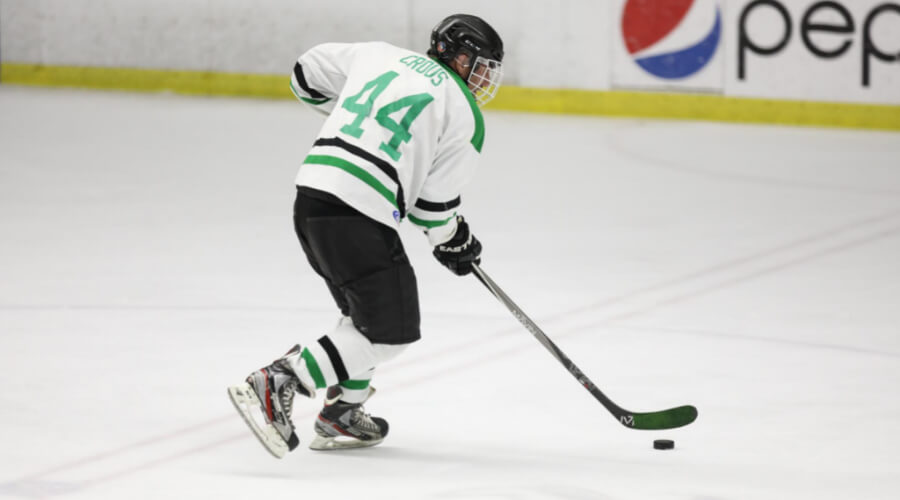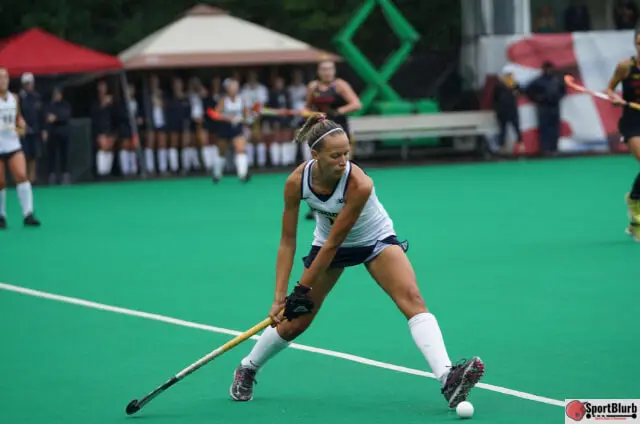Last Updated on October 14, 2023 by Alex PT
In hockey, “hits” or “hitting” refers to physical body checks delivered by players to opponents. These legal collisions aim to separate opponents from the puck, gain possession, or disrupt the opposing team’s play. In the NHL, there can be thousands of hits in a single season.
What Are Hits Or Hitting In Hockey?
- Definition of a Hockey HitA hit in hockey, often referred to as a body check, is a physical act where a player uses their body to legally separate an opponent from the puck, thereby gaining possession or disrupting the opposing team’s offensive play.
- Purpose of a Hockey HitHitting serves multiple purposes in hockey. Firstly, it allows a player to dispossess an opponent of the puck. Secondly, when executed correctly, it can rattle the opposing team, potentially causing them to hesitate or make mistakes.
- Legal vs Illegal HitsNot all hits are considered legal. Two components majorly determine whether a hit is within the rules: the point of contact and the intent. Legal hits should be delivered to the body, between the shoulders and the hips. Hits to the head or from behind are usually penalized.
- The Art of Clean HittingA clean, legal hit requires careful timing, execution, and a degree of sportsmanship. The player should keep their elbows down, use their shoulder for contact, and strive not to hit an opponent from behind or target their head.
- Significance of Hitting in the GameHitting is an integral part of the game and a key defensive strategy. A team capable of delivering solid, clean hits can exert considerable control over the flow of the game.
- Hitting Stats in a Hockey GameIn the game statistics, hits are recorded as ‘HITS.’ A player who regularly delivers clean, effective hits can often quickly accumulate a high hit count, assisting their team’s defensive efforts.
The table below shows a summary of the components of a hockey hit:
| Component | Description |
|---|---|
| Definition | Using the body to separate an opponent from the puck |
| Purpose | To dispossess an opponent of the puck and disrupt their play |
| Legality | Determined by the point of contact and intent |
| Execution | Requires timing, technique, and sportsmanship |
| Significance | Integral to the game and a key defensive strategy |
| Stats | Recorded as ‘HITS’ in the game statistics |
Types of Hitting in Hockey
In hockey, hitting is a crucial aspect of the game, involving physical contact between players to gain control of the puck or disrupt the opponent’s play. Here are some types of hitting in hockey:
- Body Check: The most common type of hitting, a body check involves a player using their body to forcefully hit an opponent along the boards or in open ice. It aims to separate the opponent from the puck or create turnovers.
- Hip Check: A hip check is a specialized form of body check where a player uses their hip to make contact with an opponent’s hip or lower body. It’s often used to knock an opponent off balance.
- Shoulder Check: Similar to a body check, a shoulder check focuses on making contact with an opponent’s upper body or shoulder. It’s used to disrupt the opponent’s progress or knock them down.
- Stick Check: While not a physical hit, a stick check involves using the stick to poke, lift, or knock the puck away from an opponent’s possession. It’s a defensive technique to regain control of the puck.
- Forecheck: Forechecking is a strategy where forwards aggressively pursue and pressure the opposing team in their defensive zone. This can involve body checks and stick checks to force turnovers.
- Backcheck: Backchecking is the defensive effort by forwards to hinder an opponent’s offensive rush. It often includes attempting to steal the puck or applying pressure without necessarily delivering a full-body hit.
- Pinching: Defensemen may “pinch” by moving down the boards to apply pressure on the opposing team in the offensive zone. This can involve body checks or using the boards to disrupt opponents.
- Open-Ice Hit: These hits occur in the center of the rink or open ice. Players use their body to deliver a check without the aid of the boards. Open-ice hits can be particularly impactful.
- Board Check: A board check involves using the boards as leverage to hit an opponent. Players often use the boards to sandwich an opponent, making it difficult for them to escape the hit.
- Neutral-Zone Check: Hitting in the neutral zone, the area between the blue lines, is common to disrupt an opponent’s transition game or create turnovers.
- Legal Checking Zones: Depending on the level of play, there may be restrictions on where and how hitting is allowed. For example, some youth leagues may prohibit body checking.
- Body Positioning: Effective hitting often involves proper body positioning and timing to maximize the impact while minimizing the risk of penalties or injury.
How To Do Proper Hitting In Hockey

For a better understanding, we’ve listed some steps involved in making the proper hits in the game of hockey. Let’s check it out.
Step One: Make sure your speed is almost the same momentum as the puck carrier. Most of the time, the opposing player with the puck is in the speed of motion. You are likely to miss the opposing player if you’re slower than him in motion. By the way, if you miss the opponent, then you’ll certainly be out of position, risking your team. Also, if you’re traveling faster than the opponent, you’ll find it more challenging to control yourself after the hitting.
Step Two: Make use of the right path to the opposing player. A defenseman should always keep his body between the net and the wing if he sees a wing trying to penetrate the offensive zone.
Step Three: Know when to make quick decisions on whether to initiate contact if the player in the offensive zone passes the puck. You’re not allowed to hit a player without possession of the puck.
Step Four: Before hitting a player, assess the relation of the player to the boards. If an opposing player is defenseless or can’t see you coming, it is illegal to check him even if he’s still in possession of the puck. In hockey, players are not allowed to hit a defenseless player. If you’re found guilty by the puck when you’re trying to check an opposing player with the possession of the puck into the boards. Make sure the opposing player can’t hold possession of the puck by pinning him against the boards.
Related Terms Of The Game
We’ve handpicked some of the related terms of the game of hockey. Let’s check them out!
Cover
Happens when a player positions himself between an opposing player and the ball.
Flagrant Foul
Any intentionally unsportsmanlike or dangerous play. The offending player is issued a red card and removed from the game.
Give And Go
Passing strategy whereby the player passes the ball to his teammate and then immediately skates to receive a return pass.
Reverse Stick
For players to make a clean hit, they need to turn the stick so that the blade points to the right.
Scanning
While in possession of the ball, players use peripheral vision to assess options.
Set Play
It is a team tactic to help score more points. Set plays are normally practiced before the game (set play includes free hits, long corners, and short corners).
FAQs
We’ve compiled a list of frequently asked questions and answers. These FAQs will help you understand everything you need to know about hits or hitting in the game of hockey. Let’s check it out!
What Is A Clean Hit In Hockey?
A clean hit in hockey occurs when a player puts himself in a prone position before the hit gets hit by an attacking player. A clean hit is normally determined by the referee. A dirty hit results in a foul or penalty. To make a clean hit, the opposing player must see it coming.
How Hard Can A Hockey Player Hit A Puck?

Using a technique known as the slap shot, hockey players can hit a pick at speeds up to 45 m/s (100 mph). Well, that’s not an exaggeration in the world of sports. We’ve seen other sports like golf balls, baseballs, and tennis balls project at that speed.
Is Body Checking Allowed In Hockey?
In 2011, the NHL modified the age at which body checking or hitting is allowed among players. The under-12 and 14 leagues do not allow hitting. However, high school and college hockey allow body checking and hitting. The International Ice Hockey Federation now allows women to do body checking.
How Are Hits Counted In The NHL?
Before you can make a clean hit, the opposing player must have possession of the puck. Hits are only counted if they impede the opposing player in some manner (at least slow him up with direct contact). For the judges to count it as a clean hit, the contact must also be intentional and legal.
Are Hits Good In Hockey?
Yes! Hits are allowed in hockey because it is an effective way of dislodging the puck from your opponent and forcing a turnover. Besides, it can lead to getting possession of the puck along the walls.
Closing Thoughts
As we said earlier, hitting happens in the game of hockey when a player drives his hip, shoulder, and upper arm to dispossess the opposing player from the puck. It happens when you see players knocking each other against the board or to the ice. Players are only permitted to body check or hit an opponent with the possession of the puck. If a player hits an opposing player without possession of the puck, then he will be penalized by the judges.
To make a clean hit, an NHL player must initiate physical contact with the opposing player possessing the puck, and the opposing player sustaining the contact must lose possession of the puck as a result of the contact. We’ve reached the final session of this informative article. We hope you were able to find good and reliable resources in your quest to know about hits or hitting in the game of hockey. If you have any questions or comments about the article topic, don’t hesitate to contact us. Thanks!
References:
https://www.freshgear.com/hockey-faqs/what-is-a-hit-in-hockey/
https://www.lovehockey.com/what-are-hits-or-hitting-in-hockey/

Hi! I’m Alex PT. I hold a Bachelor’s degree in Sports Management from Indiana University and have over seven years of valuable experience working in a Sports Event Management Company. I founded SportBlurb with the passion for bringing you the latest, most insightful, and engaging content in the world of sports. So, whether you’re a die-hard fan or want to stay informed, I’ve got you covered!

